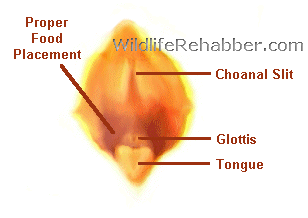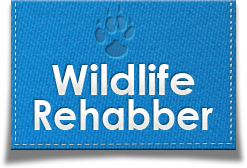Beak Function
The beak of a bird is considered a lightweight, bony elongation of its skull. The structure of the beak is covered with keratin, the same material found in human fingernails and hair. On many birds, the keratin dries to form hard, glossy, outer covering. The keratin renews on the tip and edges of the beak as they are worn away.
Beaks may have serrated edges, but do not contain teeth. Teeth are too dense and heavy, and their weight alone would interfere with the ability to fly.
Beaks are used to defend territory, attack competitors, groom feathers, communicate, and to forage or capture food. Beaks have evolved to adapt to the specific needs of each species, and vary greatly in length, density and function.
Hooked beaks are utilized for apprehending and tearing prey. (raptors) Long dagger-like bills are useful for spearing and grasping fish in shallow or deep waters. (Anhingas, herons) Pouched beaks can be used for scooping up fish. (Pelicans) Long thin beaks protect long tubular tongues and allow for probing.
- Thin and long – Hummingbirds for extracting nectar from flowers,
- Long and very sensitive – Snipes and woodcocks for probing mud and water for worms
- Long and dense – Woodpeckers for extracting insects deep within crevices
Thin beak structures that are very wide and pliable allow capture of insects while in flight (Swallows, swifts, nighthawks and whippoorwills) Dense cone-shaped beaks for cracking open seeds. (Cardinals, Finches, Cowbirds) Short thin beaks for extracting insects from within tree crevices (wrens, chickadees) Long flat soft beaks with serrated edges for dabbling in mud and enbankments for nutrients (well, actually bills) (ducks).
Respiratory Function Air enters the nares and is moistened and warmed as it travels through the nasal cavity (which connects with the infraorbital sinus and the cervicocephalic air sacs) and exits through the choanal slit. When a bird breathes, the mouth is closed and the glottis creates a seal with the choanal slit, allowing air to travel from the nasal cavity to the trachea. Unlike mammals, birds do not have an epiglottis (valve during swallowing to prevent food entrance). The opening and closing of the glottis is controlled by reflex action.
Air enters the nares and is moistened and warmed as it travels through the nasal cavity (which connects with the infraorbital sinus and the cervicocephalic air sacs) and exits through the choanal slit. When a bird breathes, the mouth is closed and the glottis creates a seal with the choanal slit, allowing air to travel from the nasal cavity to the trachea. Unlike mammals, birds do not have an epiglottis (valve during swallowing to prevent food entrance). The opening and closing of the glottis is controlled by reflex action.
Injuries
Although the tips of the beak due regrow, other areas of the beak do not usually respond well to injury. Improperly opening the beak during force feeding, as in the case of baby jays, can also cause irreparable damage. If a fresh bloody injury is presented, it is possible that some healing may occur if the site it “splinted”. This can be accomplished by gluing a thin flattened strip of plastic over the injury site (use a permanent adhesive). This splint will usually fall off within 2 weeks, but that should be sufficient to allow healing to occur. The beak will be sensitive for up to two weeks, and stomach tubings may be necessary due to the bird’s reluctance to eat. Occasionally, trauma or attacks will leave birds without a portion of their beak. On most birds, a 1/4 inch missing section is acceptable. Birds that are missing larger sections are not releasable unless they can demonstrate an ability to successfully forage their natural diet while in captivity. Some ducks have been able to properly “dabble” although they were missing 1/2 of their upper bill and 1/4 of their lower bill.
Crossed beaks sometimes naturally occur in the wild and birds have survived with this deformity. However, injuries that result in crossed beaks may have also caused misalignment of the jaw. As with beak injuries, it should be determined whether the bird can successfully forage its natural diet in captivity. Additionally, the bird should be kept an extended period to determine whether it is also able to keep it’s beak properly worn down. Otherwise the beak tips could grow to such an extent as to interfere with foraging.
Use the following criteria when evaluating whether a bird with a beak injury that is eating well in captivity is a candidate for release:
- Allow at least 4 months in captivity to determine whether irregular beak growth patterns develop.
- Is the bird capable of keeping the beak properly worn down.
- Is the bird able to properly preen its feathers (including ability to waterproof).
- Was the bird capable of maintaining its weight when provided food in a manner similar to how it would forage in the wild.
- Will the internal structure of the beak (tongue, mucosal lining) and the bird’s respiratory ability be compromised during cold weather extremes.





